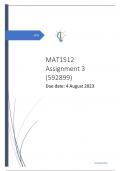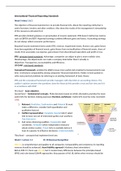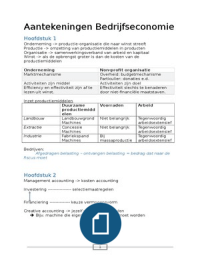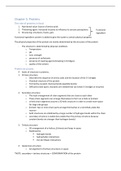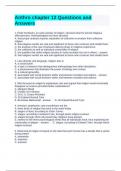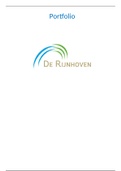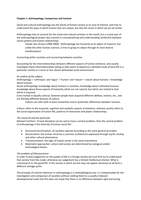Week 1 ........................................................................................................................................................... 3
Lecture 1 .................................................................................................................................................... 3
Van Ittersum (2015) .................................................................................................................................. 4
Burroughs & Rindfleisch (2011)................................................................................................................. 6
Reynolds, Thomas & Gutman (1988) ........................................................................................................ 9
Week 2 ......................................................................................................................................................... 11
Lecture 2 .................................................................................................................................................. 11
Lecture 3 .................................................................................................................................................. 11
Tutorial .................................................................................................................................................... 14
Walker, Renee, Christopher, Keane & Burke (2010) ............................................................................... 15
Week 3 ......................................................................................................................................................... 16
Lecture 4 .................................................................................................................................................. 16
Allcot & Mullainathan (2010) .................................................................................................................. 19
Trope, Liberman & Wakslak (2007) ......................................................................................................... 20
Hamilton & Thompson (2007) ................................................................................................................. 23
Newmann, Gorlin & Dhar (2014)............................................................................................................. 26
Frederisk, Stenner & Hobman (2015)...................................................................................................... 30
Week 4 ......................................................................................................................................................... 32
Lecture 5 .................................................................................................................................................. 32
Week 5 ......................................................................................................................................................... 35
Lecture 6 .................................................................................................................................................. 35
Griffiths & West (2015) ........................................................................................................................... 38
Chandon, Pierre & Wansink (2012) ......................................................................................................... 41
White, Habib & Hardisty (2019) .............................................................................................................. 47
Week 6 ......................................................................................................................................................... 52
Lecture 7 .................................................................................................................................................. 52
Bolderdijk, Steg, Geller, Lehman & Postmes (2013) ............................................................................... 54
Hertwig & Grune-Yanoff (2017) .............................................................................................................. 56
Week 7 ......................................................................................................................................................... 59
Lecture 7 .................................................................................................................................................. 59
Van Doorn & Kurz (2021)......................................................................................................................... 61
1
, Khan, Uzma & Ravi Dhar (2006) .............................................................................................................. 64
Practice questions ....................................................................................................................................... 67
2
,Week 1
Lecture 1
Without consumption life ceases – at least at the basic level of air, water, food, and shelter.
Use the power of marketing to let them buy and do things that is better for the world.
In the assignment we will think about something that will make this world a better world.
We need to collect data. To make clear that the intervention would work in real life.
Marketing = the activity, set of institutions, and processes for creating, communicating, delivering, and
exchanging offerings that have value for customers, clients, partners and society at large.
- Consumer is being mentioned
- Realization that you can’t push anything to consumers: it should be valuable.
Consumer well-being
Two broad perspectives on consumer-well being
- Hedonic perspective -> you want to be as happy as you can. It defines consumer well-being in terms of
pleasure attainment and pain avoidance. Drinking beers in the city center.
- Eudaimonic perspective -> does not focus on happiness alone, but focuses on helping people to get the
best out of themselves. It defines consumer well-being in terms of the degree to which people are
realizing their true nature. Not drinking beers in the city center, but investing in your future by following
lectures.
Shift in relationship of consumer well-being with health:
Health = the ability to adapt and self-manage in the face of social, physical, and emotional challenges.
More changing towards an audaimonic perspective.
Relation with energy
- Energy consumption and changing norms
- Energy transition – prosumers, peaks-balancing
- Interventions and feedback
Means-end chain theory
It’s about values below why you want to buy or do stuff.
People want to take photos, because people want to be immortal. However, people don’t really know
that consciously. But it is underlying of an action.
3
, Van Ittersum (2015)
Marketing and consumer well-being, inaugural speech
Marketing has a (negative) reputation of being misleading.
Often it is not being said as being at the expense of consumer well-being.
Consumers do not truly believe that marketers have their well-being at heart.
Marketers that have consumers well-being at heart: win-win -> the well-being of the marketer and the
consumer goes up.
We should create economic value by creating social value.
Marketing = the activity, set of institutions, and processes for creating, communicating, delivering, and
exchanging offerings that have value for customers, clients, partners and society at large.
Example
Unilever: helps a billion people to take steps to improve their health and well-being.
Unilever tries to contribute by keeping the individual well-being of their customers in mind.
Consumer well-being
= a state of flourishing that involves health, happiness and prosperity.
- Hedonic perspective -> focus on happiness. Defines consumer well-being in terms of pleasure
attainment and pain avoidance.
- Eudaimonic perspective -> focus on actualization of human potentials. Defines consumer well-being in
terms of the degree to which people are realizing their true nature.
! Consumer well-being is being defined hedonic, above, because the author believes that many
consumer behaviors that contribute to a sense of happiness are irrelevant for feeling meaningful, even
though feeling meaningful may contribute to someone’s happiness.
What 2 assumptions are being made that should be challenged?
Freedom of choice
An example why this assumption is not always the case is obesity. Not always everywhere healthy food is
available. In low-economic neighborhoods, there are less stores that sell healthy food for example.
Therefore, this limits the freedom of choice to contribute to you own well-being.
Capability of making informed choices
It is not true that people are always cognitively able to know what they are buying in store.
People are also not always aware how much food they eat, prepare etc.
Firms that improve consumers’ freedom of choice and choice-making capabilities in the marketplace
may benefit by attracting more and new customers.
4


